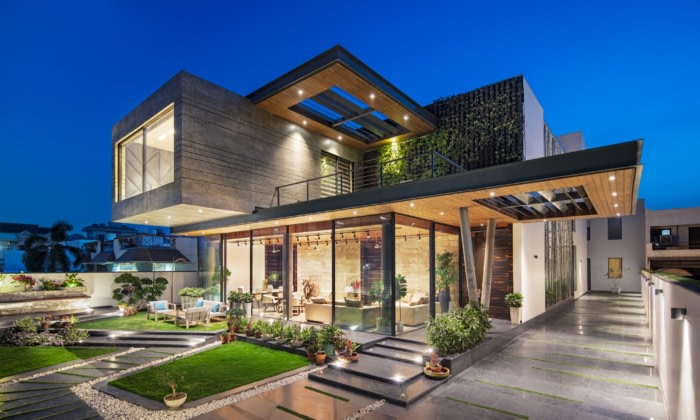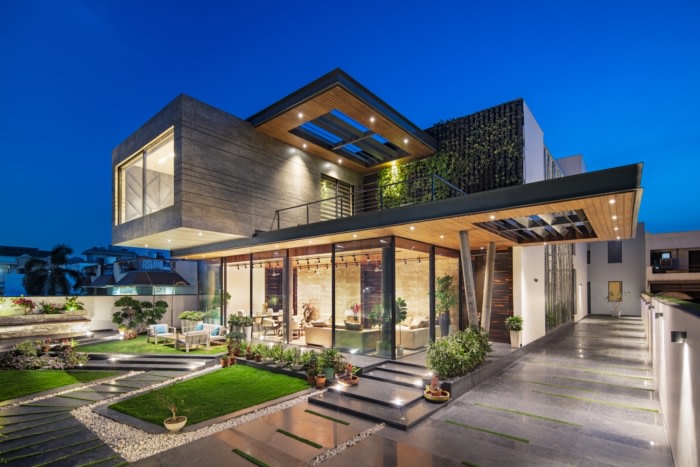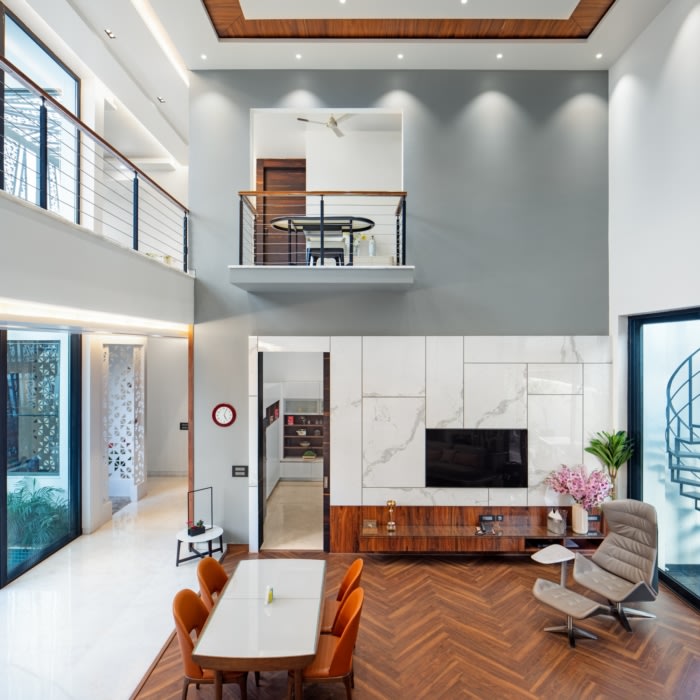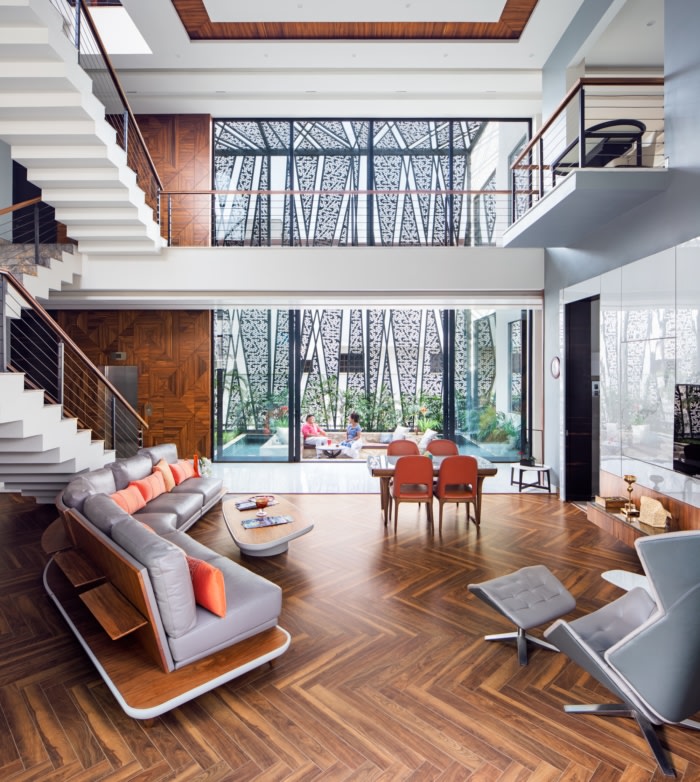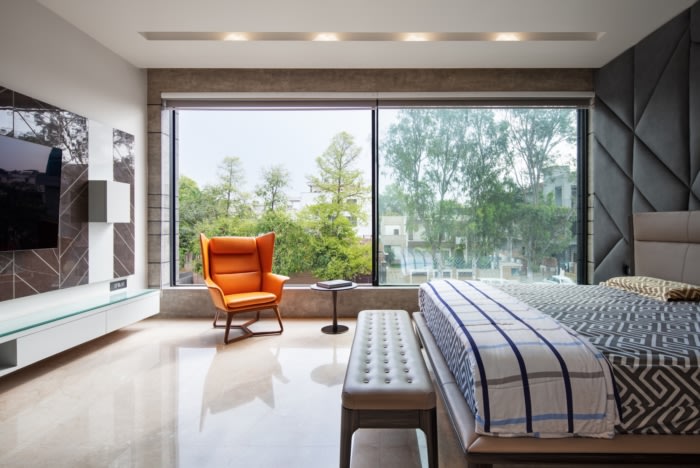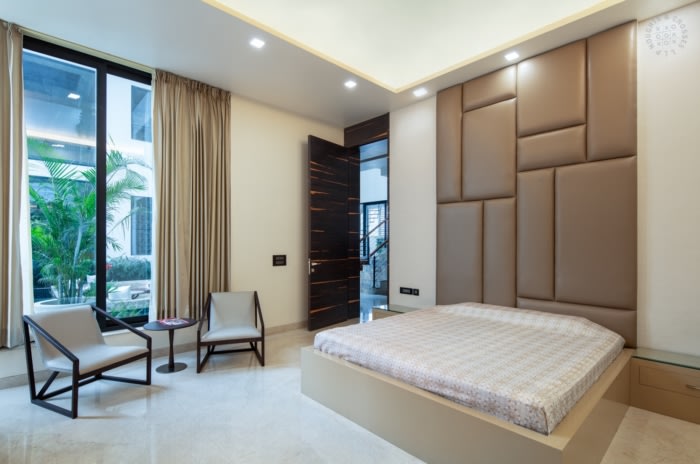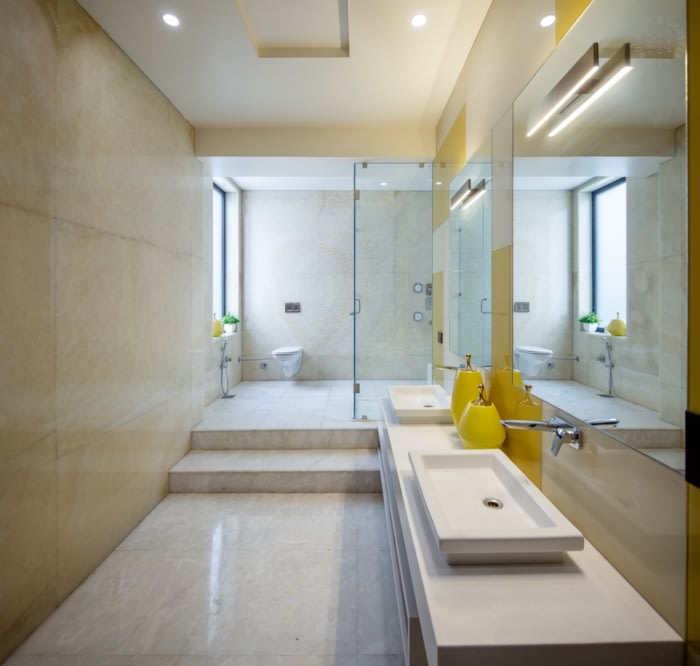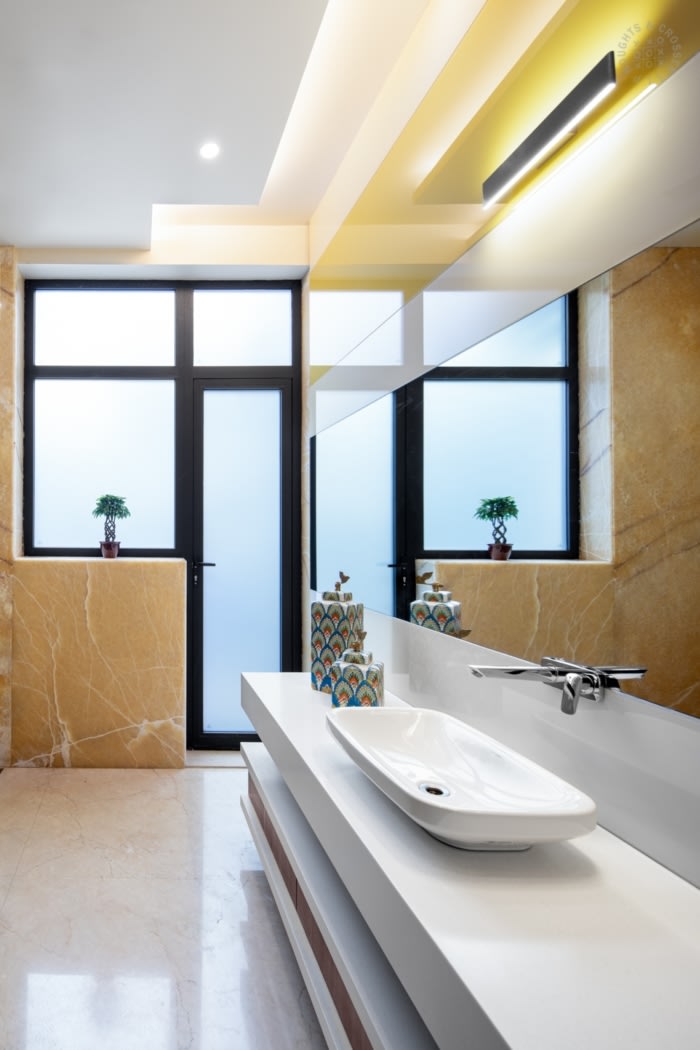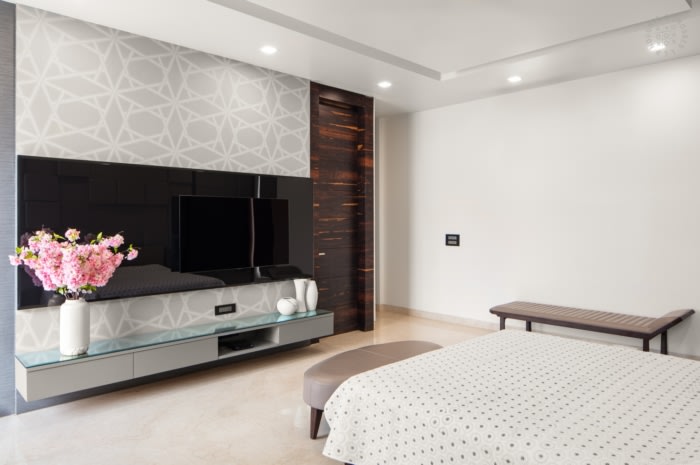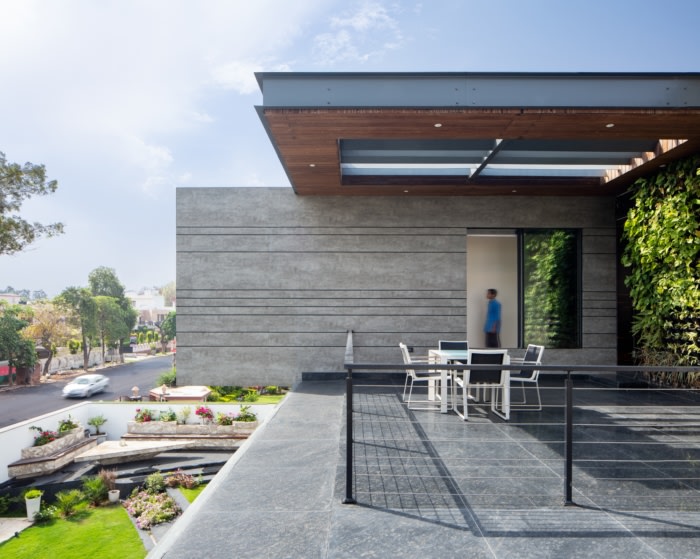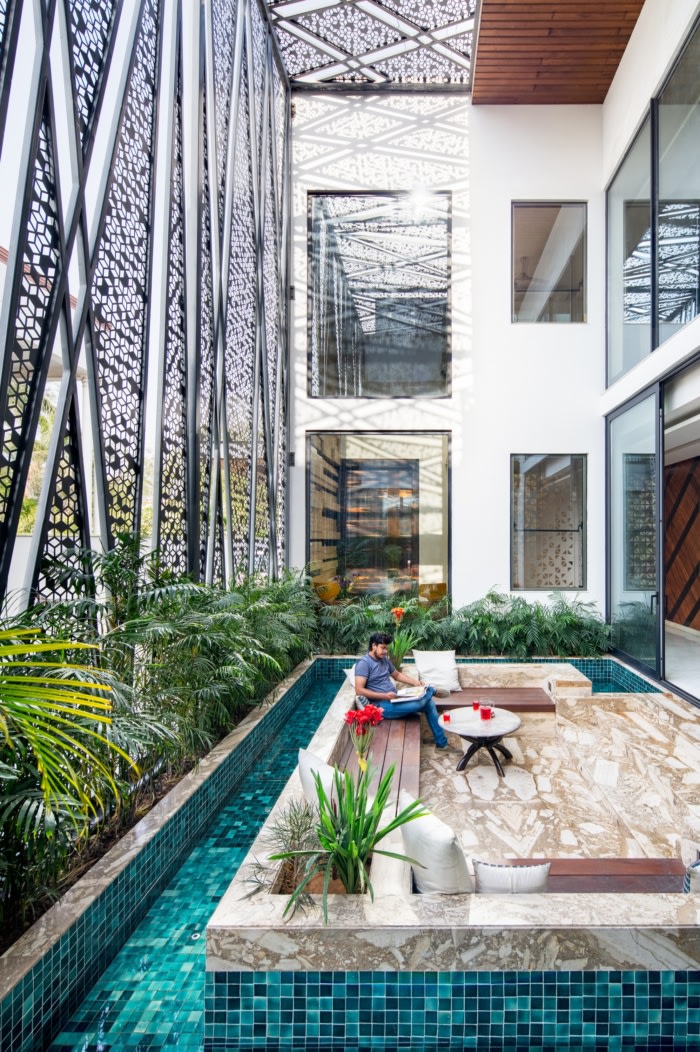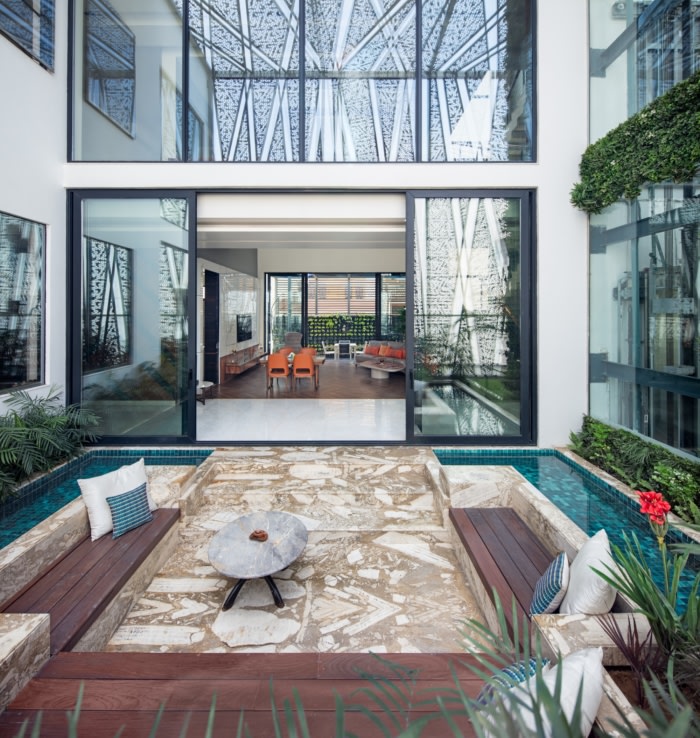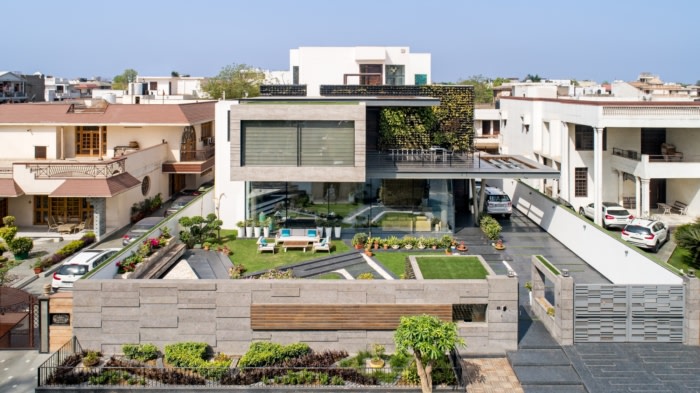The Cantilever House
ZED Lab drew from a dwelling’s regional vernacular to find expression through a contemporary lens to become a home for a family of four in Ghaziabad.
Located in the Raj Nagar locality of Ghaziabad, part of the National Capital Region of Delhi, the house is designed in response to the clients’ love for the outdoors. It employs a series of mechanisms that minimize resource consumption, and reduce the building’s environmental impact while enhancing the residents’ thermal comfort.
The design scheme was largely driven by two endeavours: first, to assimilate traditional building wisdom and find an appropriate expression within the contemporary context. Second, the distribution of various private spaces and varying volumes are planned in order to account for the diversity of usage based on the time of the day and privacy required. a series of connected living spaces, courtyards, and bedrooms were planned with the intent to create a home that could be brought to life throughout the day. Similarly, the cantilever slabs spanning the verandah, render a modern aesthetic while creating shaded spaces underneath.
The design lays emphasis on responsible living through its layout, the use of passive cooling techniques and by drawing energy from renewable resources. Metaphorically, the house is an oxymoron, serene and cool, with minimalistic decors, yet simultaneously, adventurous in its design approach.
The interiors comprise a material palette featuring varying shades of browns and greys juxtaposed with the use of bright, upholstered furniture and decor elements. The house is full of cozy nooks, designed for maximum comfort and wellbeing, as well as encouraging responsible living.
The Cantilever House takes into account the harsh North Indian climate and employs a series of mechanisms that minimize resource consumption and reduce the building’s environmental impact while enhancing the residents’ thermal comfort. For example, the double-height lobby is flanked by the summer court on the north and the winter court on the south to enable stack ventilation at all times. The night-time spaces are characterized by optimum thermal mass to protect the day-time spaces from the south and west sun. The north face of the house is glazed to admit diffused daylight and avoid heat gain and glare. To prevent heat gain from the south, the design minimized the number of windows on the south façade and these were shaded further with the addition of a pergola. The facade is fitted with double-glazed units with low-E coating for thermal resistance. Nearly all glazing for the day-time spaces is designed to open into the water court.
Additionally, the integration of landscape features with the built envelope ensures a cool microclimate for the residents. The water court on the north serves as a heat sink; the plants and vertical garden also contribute to thermal comfort while purifying the air, trapping dust and pollutants. The front and rear lawns along with the water court serve as recharge pits for rainwater harvesting. The residents’ hot water requirements are met by evacuated tube solar hot water systems installed on the rooftop.
With an overarching focus on utilizing transitional spaces, the design for the Cantilever House upholds the importance of such spaces in providing adaptability and enhancing the built quality of the environment. The house borrows from the Indian vernacular and its traditional architectural elements and is informed by a deep and innate understanding and application of age-old bioclimatic wisdom reinterpreting them to become an energy-efficient and sustainable family home.
Design: ZED Lab
Design Team: Sachin and Payal Seth Rastogi
Photography: Studio Noughts and Crosses

